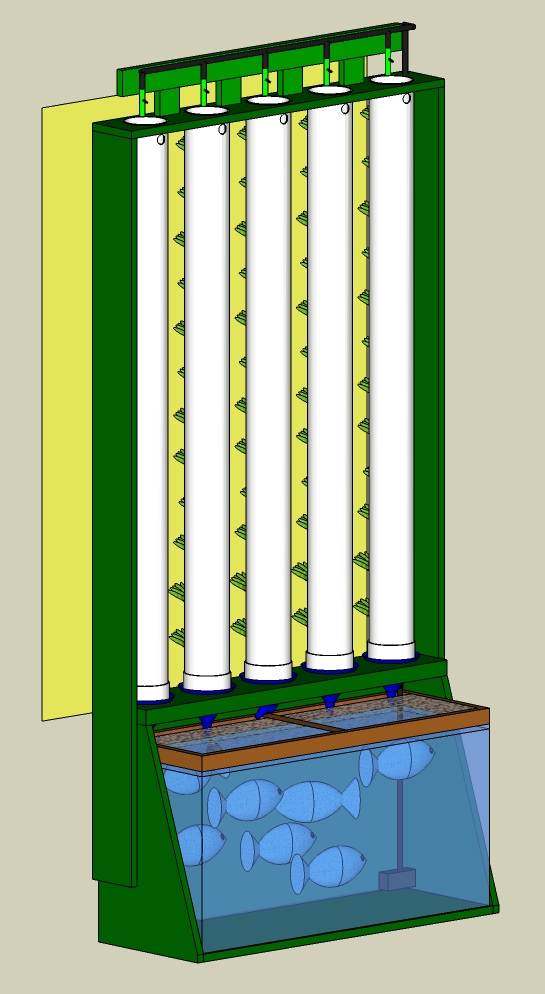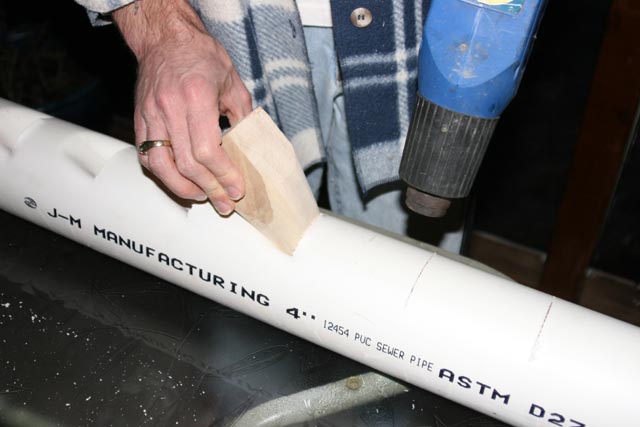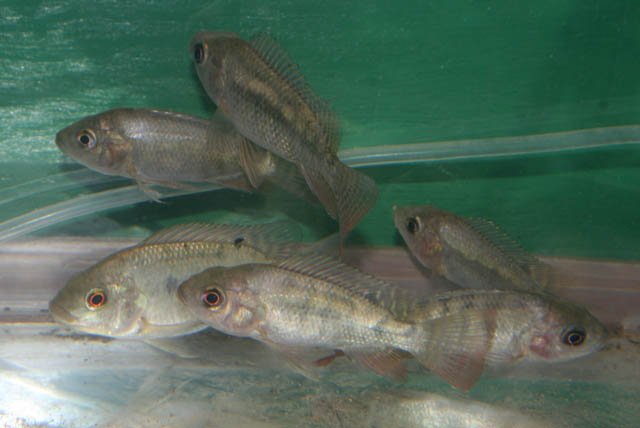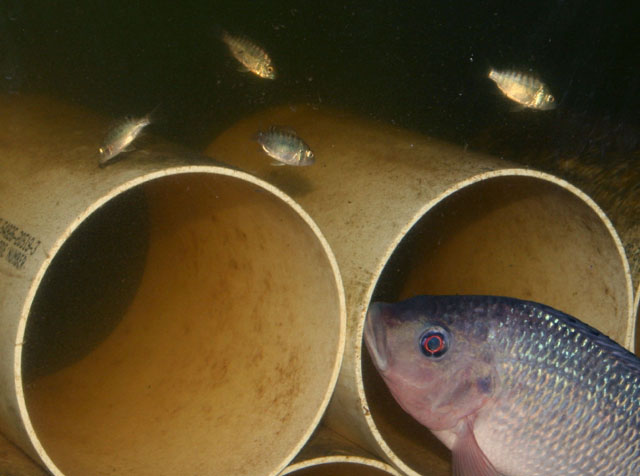Includes affiliate links that help offset our expenses at no cost to you. Affiliate programs and affiliations include Amazon Associates and the eBay Partner Network.
Aquaponics is a combination of aquaculture (raising fish) and hydroponics (growing plants without soil). The wastes from the fish are broken down by bacteria living in the growing medium, and converted into a form that can be used by the plants.
Integrated Vertical Tube System
Here’s a drawing and a photo of the integrated vertical tube aquaponics system we built. The photo shows the tubes in the planting/harvesting position; normally they are rotated 180 degrees so that the openings face the window.


I made the drawing using SketchUp, a great free 3-D drawing program. If you have SketchUp and want my drawing file you can download it by clicking here.
To make the grow tubes, I cut slots across with a hack saw and then heated the plastic with a heat gun to soften it. Once it was soft I pushed in a tapered wooden plug to hold it open until the plastic hardened again. I did this outside because the PVC gives off some fumes when you heat it. The second photo below shows a close up of one of the openings after the tube was filled with pea gravel.


The PVC caps on the bottom of the tubes have slots cut around the edges with a table saw, so that any water that might drip out around the plants can just run down the outside of the tube and through the slots. Otherwise the cap would seal against the funnel and the water could not drain. Normally the water flows down through the tube and out the holes I drilled in the bottom of the cap.


The photo below shows the top of the system, with the flow control valves that regulate the flow of water to each tube. These were necessary in order to balance the flow because without them, most of the water runs into the tube closest to the pump. Note that the tubing is black in order to prevent algae from growing inside it, but after a while it will still develop a film inside from beneficial bacteria that break down the fish wastes. We found that it was necessary to clear the tubes out now and then, by closing all but one valve and turning the pump off and on. The sudden surge of water when the pump starts is enough to clean the accumulated biofilm that adheres to the inside of the tubing.

April 3, 2007 We got fish today! They are about 3″ long and cost us $3 apiece. Their first meal was a small handful of earthworms, which they ate eagerly. I think the one in the bottom picture is burping.


Here’s my new experimental setup to permit multiple fish to each establish a breeding territory in one tank:

5-2-2007 Here’s our first harvest of lettuce, which totaled a whopping 9 grams (0.3 ounces)! The lettuce is a red variety so the color is normal for this type.

6-3-2007: We’ve had quite a few salads now and the plants are doing great. The spinach is spindly but the basil, upland cress and lettuce are thriving.

8-14-2007 We’ve got babies! We hadn’t looked closely for a while so we were surprised to see about 50 little tilapia in the tank today and they’re already over 1 cm long. The water isn’t normally this cloudy but we just cleaned the tank so it’s all stirred up.


The adults are doing well too, and they’ve grown quite a bit.

9-3-2007: The first group of babies have grown to about 1″ long, and we now have a second brood of little ones. The adults pretty much ignore them but the larger babies will “thin out” the smaller ones for us. It’s survival of the fittest in this tank!


Epilog: We shut down this project in the spring of 2008, in preparation for moving to Michigan. We ate the largest of the fish, which weighed in at about 10 ounces – not quite market size but enough for a taste anyway, and it was pretty tasty.In retrospect we wouldn’t undertake any serious fish-raising project without first developing a food source, as purchasing fish food getsrather pricey plus there’s no control over its contents. We’d also use a tank that’s easier to clean!